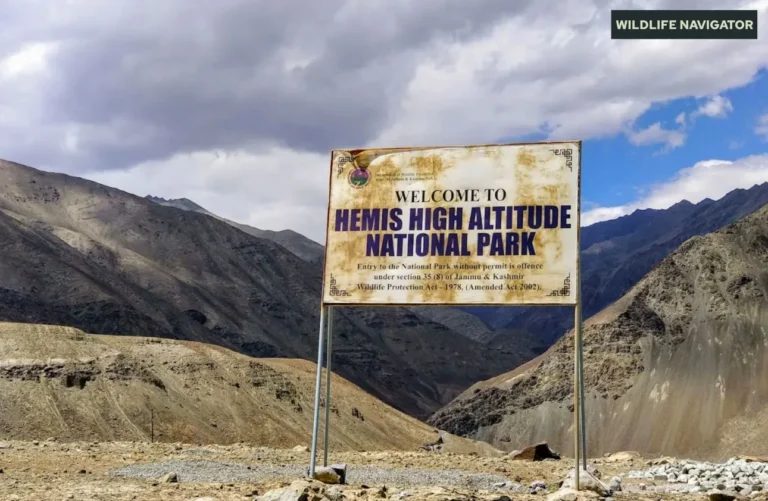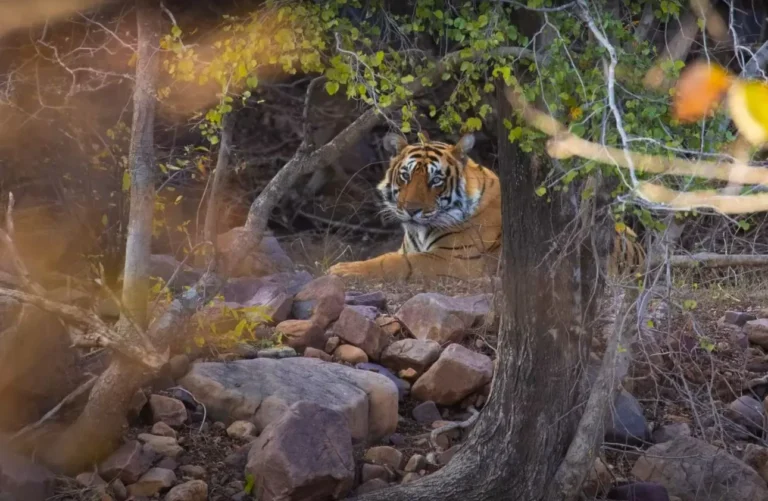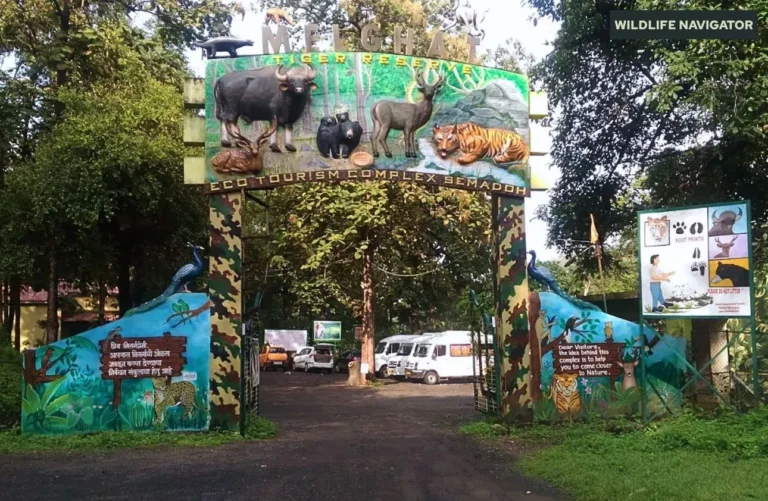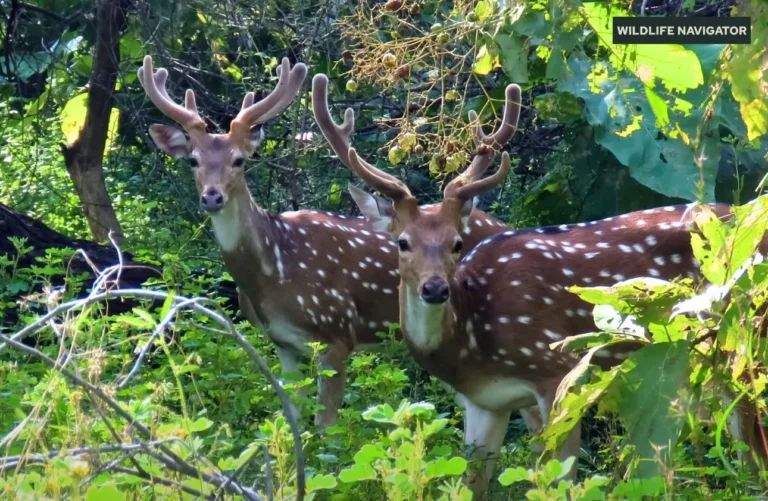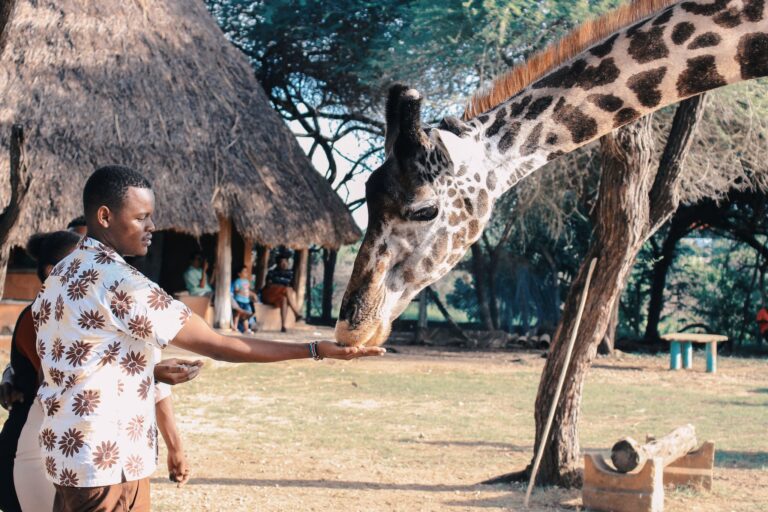Sandakphu Trek Guide: Route, Itinerary, Best Time, Permits & Tips

Have you ever dreamt of witnessing four of the world’s highest mountains in a single panoramic frame? If yes, then the Sandakphu Trek should be at the very top of your adventure list. Known as the “Trekkers’ Wonderland,” Sandakphu stands tall at 11,930 ft (3,636 m), making it the highest point in West Bengal. From this spectacular vantage point, you can soak in breathtaking views of Mount Everest, Kanchenjunga, Lhotse, and Makalu—all towering giants above 8,000 meters.
But Sandakphu is much more than just a mountain viewpoint. The trek takes you along the Singalila Ridge, tracing the border between India and Nepal. On one side, you’re in India; on the other, you’re in Nepal—a rare and thrilling experience for trekkers. Along the way, you’ll pass through charming mountain villages, lush rhododendron forests, and the vibrant ecosystem of the Singalila National Park, home to the elusive red panda.
Whether you’re a first-time trekker or a seasoned mountaineer looking for a moderate Himalayan trail, the Sandakphu Trek offers a perfect balance of adventure, culture, and natural beauty. In this guide, we’ll cover everything you need to know about the trek—its route, itinerary, best time to visit, permits, accommodation, and tips to make your journey unforgettable.
1. About Sandakphu Trek
The Sandakphu Trek is one of the most unique Himalayan trails in India, offering an unmatched combination of scenic landscapes, cultural encounters, and panoramic mountain views. Located in the Darjeeling district of West Bengal, this trek follows the Singalila Ridge, a high-altitude stretch that runs along the Indo-Nepal border. What makes it truly fascinating is that at several points during the trek, you’ll actually be walking in both countries—sometimes having breakfast in Nepal and dinner in India!
1.1 Quick Facts About Sandakphu Trek
- Maximum Altitude: 11,930 ft (3,636 m)
- Trek Distance: ~65 km (round trip)
- Duration: 6–8 days, depending on the route and pace
- Base Camp: Manebhanjan (around 30 km from Darjeeling)
- Difficulty Level: Moderate (ideal for fit beginners as well as experienced trekkers)
- Best Seasons: Spring (March–May) and Autumn (October–November)
The trek’s most famous highlight is the “Sleeping Buddha” formation—a natural outline of Mt. Kanchenjunga and its surrounding peaks resembling a sleeping figure. Alongside this, trekkers are rewarded with rare views of four of the world’s five tallest mountains—Everest (8,848 m), Kanchenjunga (8,586 m), Lhotse (8,516 m), and Makalu (8,485 m). Few treks in the world offer such a majestic Himalayan panorama.
But the Sandakphu Trek isn’t just about the mountains. It is equally renowned for its biodiversity, as it passes through the Singalila National Park, home to exotic flora like rhododendrons, magnolias, and orchids, as well as fauna such as red panda, Himalayan black bears, and countless species of birds.
Adding to the charm is the cultural flavour of the region. The trail takes you through small Nepali and Tibetan villages like Tumling, Gorkhey, and Srikhola, where you can experience warm hospitality, taste authentic local food, and get a glimpse of mountain life.
2. Best Time to Do Sandakphu Trek
The beauty of the Sandakphu Trek changes dramatically with the seasons. From blooming rhododendrons in spring to crystal-clear mountain views in autumn and snowy trails in winter, each season offers a unique flavour of the Himalayas. However, not every season is suitable for trekking, so timing your adventure is crucial.
2.1 Sandakphu in Spring (March – May)
- Highlights: The entire trail bursts into colour with rhododendrons, magnolias, and orchids in full bloom. The Singalila National Park looks like a giant natural garden.
- Mountain Views: Generally good, though occasional clouds may appear.
- Temperature: Daytime 10°C–15°C; nights can drop to 0°C.
- Why Choose Spring: If you’re a nature lover and enjoy trekking through vibrant forests, this is the best time.
2.2 Autumn (October – November)
- Highlights: Crystal-clear skies and the most reliable mountain views. This is the season when the peaks of Everest, Kanchenjunga, Lhotse, and Makalu appear in their full glory.
- Temperature: Daytime 8°C–12°C; nights drop to -5°C.
- Why Choose Autumn: Best season for photographers and mountain lovers. The landscapes are sharp, golden, and perfect for capturing the Sleeping Buddha formation.
2.3 Winter (December – January)
- Highlights: A true snow trek experience. The trail is often blanketed in snow, making it more challenging yet magical.
- Mountain Views: Crisp and clear, especially in early winter.
- Temperature: Daytime around 2°C–6°C; nights can plummet to -10°C or below.
- Why Choose Winter: Ideal for trekkers seeking solitude and the thrill of trekking on snow-covered paths. Requires proper gear and winter preparation.
2.4 Monsoon (June – September)
- Highlights: Not recommended. The trail becomes slippery and prone to leeches and landslides. Visibility is poor due to heavy clouds and rain.
- Why Avoid: High risk of accidents and limited mountain views.
Quick Recommendation:
- For best mountain views, go in October–November.
- For flowers and greenery, go in March–May.
- For a snow adventure, pick December–January.
3. How to Reach Sandakphu (Base: Manebhanjan)
Reaching the starting point of the Sandakphu Trek is an adventure in itself. The trek generally begins from Manebhanjan, a small hill town located around 30 km from Darjeeling. Getting there involves multiple options depending on whether you’re arriving by air, train, or road.
- By Air
- Nearest Airport: Bagdogra Airport (IXB), located about 115 km from Manebhanjan.
- Travel Time: 4–5 hours by road.
- Options: From Bagdogra, you can hire a private taxi, take a shared jeep to Darjeeling, and then proceed to Manebhanjan. Prepaid taxi services are available at the airport.
- By Train
- Nearest Railway Station: New Jalpaiguri (NJP), about 120 km from Manebhanjan.
- NJP is well-connected with major Indian cities like Delhi, Kolkata, and Guwahati.
- From NJP, you can take a taxi or a shared jeep to Darjeeling and continue onwards to the trek base.
- By Road
- From Darjeeling: Manebhanjan is just a 1.5-hour drive (30 km). Local taxis are easily available.
- From Siliguri/NJP: You can book a cab or jeep directly to Manebhanjan (4–5 hours journey).
- From Bagdogra Airport: Direct cabs are available (approx. ₹3,500–₹4,500 for private vehicles).
3.1 Special Note on Manebhanjan
- Manebhanjan is the official base camp for the Sandakphu Trek.
- It is also famous for its fleet of Land Rovers, vintage vehicles that date back to the 1960s and are still used to drive trekkers and tourists up to Sandakphu and Phalut. If you’re short on time or unable to trek, you can opt for this thrilling jeep ride as an alternative.
3.2 Alternative Starting Points
While Manebhanjan is the classic starting point, some trekkers begin the trek from Chitrey, just a 3 km uphill drive from Manebhanjan. Starting from Chitrey saves time and gives you an easier first day on the trail.
Pro Tip: If you’re travelling from outside West Bengal, the most convenient route is:
Bagdogra Airport → Darjeeling → Manebhanjan → Trek start.
4. Sandakphu Trek Itinerary (Day-by-Day)
The Sandakphu Trek typically takes 6 to 8 days, depending on the route, pace, and whether you include an extension to Phalut. Below is a standard and well-balanced itinerary that most trekkers follow.
- Day 1: Reach Manebhanjan – Trek/Drive to Chitrey
- Altitude: 6,300 ft → 8,400 ft
- Trek Distance: ~3 km (1.5–2 hours)
- Highlights: The trek begins with a steep climb from Manebhanjan. Many trekkers prefer to drive up to Chitrey to save energy for the days ahead. Chitrey offers stunning views of the valley and is a peaceful place to acclimatise.
- Stay: Tea house/homestay in Chitrey.
- Day 2: Chitrey to Tumling
- Altitude: 8,400 ft → 9,600 ft
- Trek Distance: ~11 km (6–7 hours)
- Highlights: The trail winds through forests of rhododendron, bamboo, and magnolia. You’ll pass small villages like Lamaydhura and Meghma. Tumling, a tiny Nepali village, offers your first grand views of Kanchenjunga if the weather is clear.
- Stay: Homestay in Tumling.
- Day 3: Tumling to Kalipokhri
- Altitude: 9,600 ft → 10,400 ft
- Trek Distance: ~13 km (6–7 hours)
- Highlights: You’ll officially enter the Singalila National Park (permit required here). Keep your eyes open for red pandas and exotic birds. The trail passes through Gairibas and Kaiyakatta before reaching Kalipokhri, named after its dark “black pond.”
- Stay: Homestay in Kalipokhri.
- Day 4: Kalipokhri to Sandakphu
- Altitude: 10,400 ft → 11,930 ft
- Trek Distance: ~6 km (3–4 hours)
- Highlights: The final ascent to Sandakphu is steep but short. As you climb, the horizon opens up to reveal Everest, Lhotse, Makalu, and Kanchenjunga in a single sweeping view. This is the moment trekkers dream about—the legendary Sleeping Buddha formation at sunrise is unforgettable.
- Stay: Tea house/homestay at Sandakphu.
- Day 5: Sandakphu to Phalut (Optional Extension)
- Altitude: 11,930 ft → 11,950 ft
- Trek Distance: ~21 km (7–8 hours)
- Highlights: The trail from Sandakphu to Phalut is one of the most beautiful in the Eastern Himalayas, with wide meadows and constant mountain views. Phalut is considered the best viewpoint for the Kanchenjunga range.
- Stay: Trekker’s hut at Phalut (very basic accommodation).
- Day 6: Phalut to Gorkhey
- Altitude: 11,950 ft → 7,500 ft
- Trek Distance: ~15 km (6–7 hours)
- Highlights: A long descent through pine and rhododendron forests brings you to Gorkhey, a postcard-perfect village by a river. Many trekkers call it the most beautiful village on the trek.
- Stay: Homestay in Gorkhey.
- Day 7: Gorkhey to Srikhola
- Altitude: 7,500 ft → 6,900 ft
- Trek Distance: ~12 km (5–6 hours)
- Highlights: Gentle descent through forests and hamlets. Srikhola is a charming riverside village and marks the last stop of the trek.
- Stay: Homestay/guesthouse in Srikhola.
- Day 8: Drive back to NJP/Bagdogra via Rimbik
- From Srikhola, a vehicle will take you to Rimbik, and then onward to Darjeeling, NJP, or Bagdogra. This marks the end of your Sandakphu adventure.
Itinerary Flexibility:
- If you are short on time, you can return from Sandakphu directly to Srikhola in 2 days without going to Phalut.
- If you want the full Himalayan experience, definitely include Phalut—it’s worth the effort!
5. Major Attractions of the Sandakphu Trek
The Sandakphu Trek isn’t just about reaching the summit—it’s about the incredible experiences along the way. From the legendary Himalayan panoramas to the biodiversity of the Singalila forests and the cultural charm of Nepali villages, here are the highlights that make this trek truly special.
5.1 The Sleeping Buddha Formation
One of the most iconic sights of the trek is the Sleeping Buddha, a natural formation created by the peaks of Kanchenjunga and its surrounding ranges. The outline resembles a reclining figure of the Buddha, with Kanchenjunga forming the “face and chest.” At sunrise, this spectacle glows in golden light, leaving trekkers speechless.
5.2 View of Four 8000m Peaks
From Sandakphu, you get a once-in-a-lifetime view of four of the five tallest mountains in the world:
- Mount Everest (8,848 m) – The highest peak on Earth.
- Kanchenjunga (8,586 m) – The pride of Sikkim and West Bengal.
- Lhotse (8,516 m) – The fourth-highest mountain.
- Makalu (8,485 m) – The fifth-highest peak.
Very few treks in India offer such a grand Himalayan panorama in one frame.
5.3 Singalila National Park
The trek passes through the Singalila National Park, one of the most biodiverse regions of the Himalayas. Key attractions include:
- Red Panda: The park is famous for being one of the last habitats of the endangered red panda.
- Flora: Rhododendrons, magnolias, orchids, and bamboo forests make the trail magical.
- Birds: It’s a birdwatcher’s paradise, with over 120 species of Himalayan birds, including blood pheasants and Himalayan monals.
5.4 Nepali & Indian Village Culture
The trail crosses small, cozy villages like Tumling, Kalipokhri, Gorkhey, and Srikhola, where trekkers experience warm hospitality. These villages have a mix of Nepali, Tibetan, and Indian culture, reflected in food, lifestyle, and local traditions. Sharing tea with locals or staying in a wooden homestay adds to the cultural richness of the trek.
5.5 Phalut Viewpoint
While Sandakphu offers a spectacular view, the Phalut viewpoint takes it a step further. Standing at 11,950 ft, Phalut provides the closest and widest view of the Kanchenjunga range. On clear mornings, the peaks look so close that they seem within touching distance. Trekkers who make the extra effort to include Phalut in their itinerary never regret it.
5.6 The Unique Indo-Nepal Trail
One of the most fascinating aspects of the trek is that the trail crisscrosses the Indo-Nepal border multiple times. You could literally have breakfast in Nepal (Tumling is on the Nepal side) and dinner in India. This cross-border experience gives the trek a rare international flavour without the need for visas or permits.
6. Difficulty Level & Fitness Required
The Sandakphu trek is rated moderate, making it suitable for beginners with basic preparation.
- Average trekking hours: 5–7 hrs per day
- Terrain: Forest trails, gradual climbs, some steep ascents (especially Bikhebhanjan → Sandakphu)
- Altitude gain: Manageable, but do pace yourself
Fitness Tips:
- Prepare 4–6 weeks before trek with walking/jogging (5 km daily).
- Practice stair climbing and leg strengthening.
- Focus on stamina over speed.
7. Accommodation & Food
One of the biggest comforts of the Sandakphu Trek is that, unlike many Himalayan treks that require tents, here you’ll find tea houses, homestays, and government trekkers’ huts along the route. This makes the trek more accessible, as you don’t have to carry camping gear or worry about food arrangements.
- Villages like Tumling, Kalipokhri, Sandakphu, and Srikhola offer lodging.
- GTA (Gorkha Territorial Administration) lodges are also available.
Food:
- Expect simple yet hearty meals – dal-bhaat, momo, thukpa, noodles, and tea.
- Don’t expect luxury; food is local and nutritious.
Facilities:
- Limited electricity (solar-powered in some places)
- Wi-Fi is rare; mobile networks are patchy (Jio/BSNL best)
- Warm hospitality makes up for the basics
8. Permits & Entry Fees
The Sandakphu Trek falls under the protected area of the Singalila National Park, which means trekkers must obtain permits before entering. These permits are checked at different points along the trail, so keeping them handy is essential.
8.1 Singalila National Park Entry Permit
- Required For: All trekkers (Indians and foreigners).
- Where to Get It: The Forest Department office at Manebhanjan, the trek base.
- Permit Fees:
- Indians: ₹100 per person per day.
- Foreigners: ₹200 per person per day.
- Additional Charges:
- Camera Fee: ₹100 for still cameras, ₹400 for video cameras.
- Trekking Fee: ~₹40 per day (nominal).
8.2 Identification Documents
- Carry at least two photocopies of valid ID proof (Aadhar card, voter ID, passport, etc.).
- Foreign nationals must carry their passport and visa copies.
8.3 Guide Requirement
- Hiring a local guide is mandatory as per park rules.
- Cost: Around ₹800–₹1,200 per day, depending on the season and group size.
- Guides not only help with navigation but also enrich the trek with insights into local culture, flora, and fauna.
8.4 Vehicle Permits (if not trekking)
- If you’re taking a Land Rover jeep ride to Sandakphu or Phalut, the vehicle also needs a permit from the forest checkpost. The jeep driver usually arranges this.
8.5 Special Notes on Indo-Nepal Trail
- Since the trail frequently crosses into Nepal, there are no visa requirements for Indians or most foreign nationals trekking this route. It’s an open border, and tea houses on both sides welcome trekkers freely.
- However, keep your ID proof with you at all times for forest and police checks.
Getting permits is a simple process at Manebhanjan, and once sorted, you’re all set to explore one of the most stunning Himalayan trails.
9. Cost & Budgeting
The trek can be done both independently and with operators.
- Trek package (with guide, stay, food): ₹8,000–15,000 per person (depending on group size).
- Independent trek:
- Food & lodging: ₹600–1,000 per day
- National Park permit: ₹120–₹400
- Camera fee: ₹100–₹400
- Jeep safari (Land Rovers from Manebhanjan): ₹4,000–6,000 one way per vehicle.
- Gear rentals: Available in Darjeeling/Siliguri for sleeping bags, jackets, and trekking poles.
10. Packing List & Trekking Tips
Essential Gear:
- Trekking shoes with ankle support
- Layered clothing (base, fleece, down jacket)
- Rain gear (poncho or jacket)
- Thermal wear, gloves, caps
- Trekking pole, torch, reusable water bottle
- Medicines, personal first aid kit, sunscreen, lip balm
- Power bank (limited charging spots)
Packing Tips:
- Carry cash (no ATMs after Darjeeling)
- Mobile connectivity is weak – inform family in advance
- Pack light but wisely – 7–9 kg backpack max
- Respect local culture – avoid loud noise & littering
The weather in Sandakphu can change rapidly—sunny mornings, misty afternoons, and freezing nights. So, carry layered clothing, waterproof gear, and essentials for cold weather. Keep your backpack as light as possible, ideally under 10–12 kg.
11. Culture & Local Experiences
The trek isn’t just about mountains – it’s about the people you meet. Villages along the trail reflect a blend of Nepali, Tibetan, and Darjeeling cultures. Expect:
- Prayer flags fluttering in the wind
- Simple organic farming lifestyle
- Warm conversations over butter tea in homestays
- Festivals like Losar (Tibetan New Year), if you’re lucky
This cultural immersion makes Sandakphu much more than just a trek.
12. Responsible Trekking & Eco-Tourism
Sandakphu lies in an eco-sensitive zone. As trekkers, it’s our responsibility to preserve it:
- Follow Leave No Trace principles
- Carry reusable bottles, avoid single-use plastics
- Respect wildlife (don’t disturb or feed)
- Support local businesses & homestays
- Keep noise minimal – let nature speak
13. Conclusion
The Sandakphu trek is not just another Himalayan trail – it’s an experience that blends majestic mountain views, cultural encounters, and raw wilderness. Where else can you sip tea in Nepal, sleep in India, and wake up to the sight of the world’s tallest peaks in one panoramic sweep?
Whether you’re a first-time trekker or a seasoned adventurer, Sandakphu offers something magical – from the legendary Sleeping Buddha view to the warm hospitality of mountain villages. It’s a journey that lingers in your heart long after you’ve descended.
So pack your bags, lace up your boots, and let the Sleeping Buddha guide your path.
